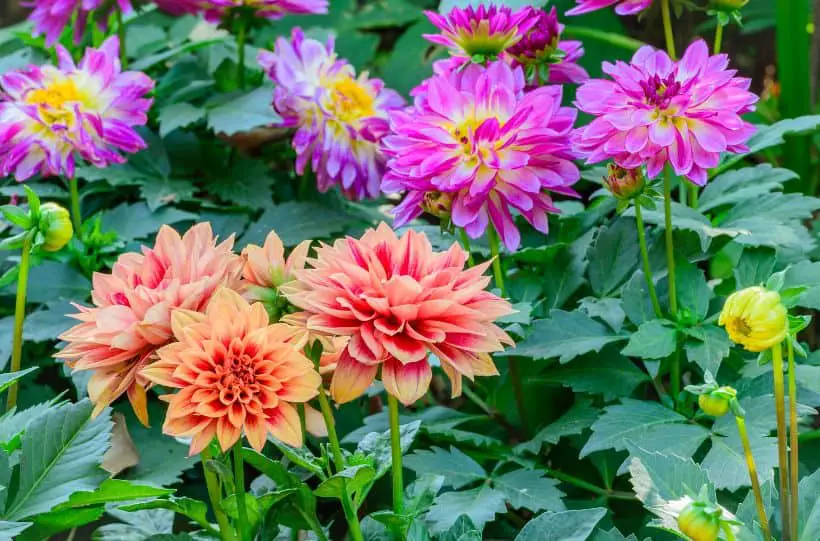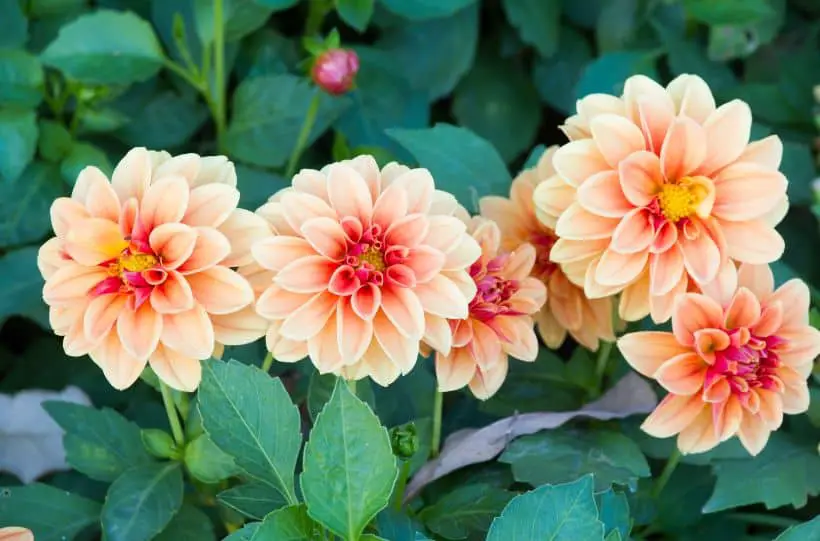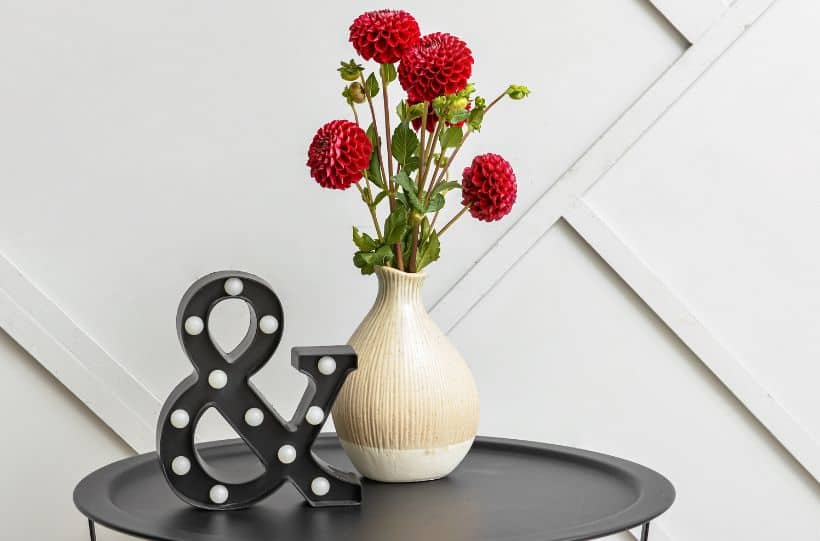How to Grow and Care for Dahlias
It is hard to miss the beautiful pom-poms of Dahlias standing gloriously in mid-to-late-summer almost everywhere you go.
Dahlias are late bloomers. You will enjoy their bountiful elegance way into autumn. The gorgeous flowers share a family with other equally beautiful flowers such as zinnias, sunflowers, and daisies.
Since dahlias can grow up to 5 feet tall, they are great for foliage or as cut flowers. In this article, you will learn everything you need to know about growing and taking care of dahlias.

Where Do Dahlias Grow?
Dahlias thrive in moist and cool zones. They do not love hot climates – which explains why they bloom late in the summer and extend this period into other cooler seasons.
In some areas, you can still find them blooming in early winter if the temperatures are not too low.
Planting Dahlias
The best time to plant dahlias is in late spring. They take about 2 to 4 weeks to sprout from the ground and about 8 weeks to bloom. If the soil is not cold during this time, the seeds will germinate without much strain. Dahlias can also be started indoors as tubers – more on this further down.
After they sprout, they require several hours (about 6-8) of direct sunshine to grow strong and steadily. They can also grow in slightly shaded areas. Dahlias are not choosy of the soil type they grow in as long as it is well-drained. However, they seem to do well in slightly acidic soils with a pH of up to 7.5.
When planting, dig holes about 6-8 inch depth and plant the tubers with the ‘eyes’ facing up, just like we do with potatoes. The seedlings will sprout from these ‘eyes’. The standard spacing when planting is 2-3 feet apart. However, if you are planting dahlias for foliage, you may need to place them closer.
Dahlias do not require fertilizer during planting. If need be, you can enhance the soil’s quality by adding organic compost. If you must use artificial fertilizer, go for something that has phosphorus. Liquid fertilizers work better than granules.
You may need to protect the plants from the wind once they have sprouted. Some dahlia varieties (such as the British originated Reedly Dahlia) can grow up to 7 feet tall. Such plants will require some support to keep them standing tall, especially once the flowers start to bloom.
After the seedlings have sprouted, you can add mulch. Mulching helps the soil retain moisture. Do not use excessive mulching as the flowers love a bit of sunshine on their roots.
Once the first blooms have started forming, you should remove them. Disbudding will give way to the formation of more flowers from the same branch.

Starting Dahlias From Tubers & Growing in Containers
Dahlias can also be started as tubers in containers. Although dahlias are primarily garden flowers, the shorter varieties can also be wonderful bouquet flowers. Tall dahlias do not grow well in containers.
If you decide to plant the shorter varieties in containers, get a sizeable one to accommodate your plants. Ensure that the container has holes to enhance drainage. Do not overwater your tubers after planting in containers to prevent root rot. The same applies to when you plant them in the garden.
Water moderately if the ground or soil is too dry. Have a bi-weekly watering program and offer the plants just enough water to keep them thriving without exposing them to root rot.
Pests and Diseases Affecting Dahlias
Several pests and diseases affect dahlias. Here are some of them;
Powdery Mildew
You will notice a whitish fungal substance on the surface of the leaves of your plant when the plant has powdery mildew. The best treatment for this is the application of a recommended fungicide. Look for something that contains a sulfur compound.
Aster Yellows
This is a disease caused by leafhoppers. In most cases, plants with this condition are not treatable. Since the affected plants can spread the disease to the healthy ones, the best remedy would be to remove them from the garden and dispose of them correctly.
Verticillium Wilt
This disease mainly affects potted plants. You will find branches of the flower wilting and falling off. In some cases, the whole plant may die. Verticillium wilt is caused by a pathogen (the verticillium spp.) inside your container.
Harvesting Dahlias
If you live in a cold area, you can start harvesting dahlias in the fall. Cut flowers can be harvested continuously as long as the plants keep blooming.

When harvesting cut flowers, remove the leaves from the lower parts of the stem before dipping the cuts in a vase of cold water. You can change the water every couple of days to keep the flowers fresh for about a week.
How to Prepare Dahlias For Winter
If you handle dahlia tubers correctly in the fall, you can enjoy gorgeous blooms for many years. Dahlias cannot survive the frost and cold winter temperatures.
During this season, dig the tubers up and store them in preparation for planting the next season. Here are the steps you can follow;
- Cut the stalks such that only a few inches remain above the ground.
- Dig around the tubers. A pitchfork would work great here because it will allow you to dig out the tubers without worrying about accidentally cutting off the roots.
- Gently shake the tubers to remove the dirt around them.
- Wash these tubers gently to get rid of any remaining dirt. Be careful not to poke holes or break into the tubers as this may cause them to rot in storage. Cut off any rotten or broken parts using a sharp knife.
- Separate these tubers into individual portions. Ensure that each tuber has at least one ‘eye’ as this is where the new seedling will sprout from.
- Cure the tubers by drying them for a couple of weeks and then store them in a cool, dry, airy place. You can store them in a container or place them in a dark place. Just ensure that the air circulation is sufficient.
Once spring comes around, the ground will be warm enough to re-plant these tubers. Remove them from your storage. Follow the planting procedure outlined here and enjoy another year of beautiful dahlias in your garden.
Recommended Dahlia Varieties to Grow
Once you start successfully growing dahlias, you are in for a real treat. These irresistible, mid to late-summer bloomers come in a wide range of sizes, shapes, and colors.
Some of our favorite dahlia types to grow:

For more guides on growing flowers, take a look at these posts:

